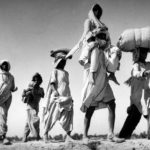 Refugees are often torn from their homeland in the most desperate of circumstances. Not only can this rupture them from their past, but they can also have families torn apart, as relatives are forced to remain behind.
Refugees are often torn from their homeland in the most desperate of circumstances. Not only can this rupture them from their past, but they can also have families torn apart, as relatives are forced to remain behind.
Project Dastaan is attempting to utilize virtual reality to help reconnect refugees of the 1947 partition of India and Pakistan to their ancestral homes and communities.
The project, which was created by a team of Oxford University students, aims to reconnect communities that were ripped apart by the partition. The project has three distinct sections:
- The Social Impact Program, which is touted as the largest VR peace project ever built, and uses a volunteer network to track down childhood homes and villages, and then film then in 360 degree videos.
- Child Of Empire, which is a VR project through which migration stories are told to educate people about the Partition.
- The Lost Migration, which aims to share first-hand survivor stories in a documentary style.
The aim with all three initiatives is to provide viewers with a visceral insight into the lives of those affected by the Partition. What’s more, by touching on topics such as identity and immigration, it aims to help with issues that are just as relevant today.
“At its heart, the Project is a poignant commentary on its own absurdity,” the team say. “By taking these refugees back, we are trying to highlight the cultural impact of decades of divisive foreign policy and sectarian conflict on the subcontinent. This is a task for policymakers, not university students. In an ideal world, a project like this shouldn’t exist.”
Back to the past
Along similar lines is a fascinating Norwegian startup, called Motitech, who also use virtual reality to send people down memory lane, albeit in their case to both encourage exercise among the elderly while also helping people with dementia.
The company work with dementia sufferers and record poignant locations from their childhood. These are then embedded into a cycling app so that users can virtually cycle through their hometown.
There are over 1,500 locations for users to choose from, but the makers believe that the most poignant will be those that trigger key memories for each user. This could be their hometown, or their favorite holiday destination, or some special spot for them and their partner.
“For people with dementia, the bikes have been amazing. As they sit and pedal, they can visit lots of different countries – where they were born, or somewhere they might have gone to as a child,” the team say. “As a result, they engage in a conversation, from which they start to reminisce. It’s amazing to be able to share that with them.”
Both projects are a great example of how video footage can be used to help reconnect people with their youth, albeit from very different starting points.